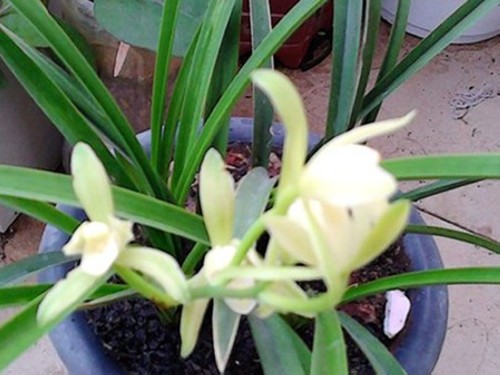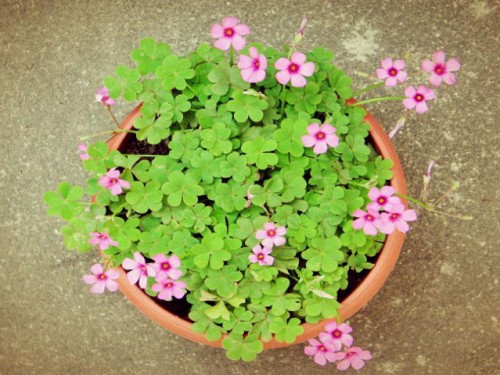How to plant potted night primrose--night primrose planting method
Night incense, also known as night fragrance, night incense, night clove, evening jade, night orchid and so on, is a kind of flowering plant originating in tropical America, with weak twigs, hairy, milky, yellowish green flowers, fragrance, even more at night, mostly potted ornamental plants, but not suitable for indoor, its flower fragrance makes it difficult to breathe. Nocturnal incense has slender branches, blossoms in summer and autumn, and yellow-green flowers bloom in the evening. They are often used to decorate courtyards, windows, ponds and pavilions in the south.

The fragrance of nocturnal flowers is also stronger at night and on rainy days than on sunny days, which is due to the high humidity in cloudy and rainy weather. Planting evening incense also needs to pay attention to a lot of problems, quickly with the editor to learn it.
1. Select the insert
The branches with strong growth and free of diseases and insect pests should be selected, and the sunny branches in the middle and upper part of the year should be selected on the same plant, requiring short internodes, strong branches and leaves, full bud tips, and unsuitable branches and overgrown branches that are about to bloom.
2. Select substrates
The bed soil prepared with peat soil and rotten leaf soil is 3 ∶ 3 ∶ 4 respectively. The bed soil prepared in this way has the characteristics of increasing bed temperature, water retention, aeration, fertility and partial acidity, and is suitable for branches to take root and sprout.
3. Deal with cuttings
The cuttings were treated with pesticides such as ABT rooting powder before cutting, which could promote rooting. Cut the cuttings into a section of 8 cm to 12 cm, with 2 to 3 buds above. The cut in the lower part of the cuttings should be 0.5 cm below the node. The incision should be smooth, cut off the lower leaves, leaving only 2 to 3 leaves at the top, and the insertion depth is generally about 3 cm.
4. Conditions for rooting
The suitable rooting temperature is 20 ℃ to 24 ℃, and the soil temperature is 3 ℃ to 5 ℃ higher than the air temperature. The relative humidity of the bed air is 80% to 90%, which is favorable for rooting and requires light of about 30%. The moisture should be suitable, which is slightly higher at the initial stage of cutting and slightly dry at the later stage. The suitable period for local open-field cutting is from early May to mid-June, which is in a better climate, which can better meet the temperature and humidity conditions needed for cuttings to take root.
5. Plug-in management
After planting, it should be watered thoroughly, covered with plastic film, placed in a shaded place, or scattered grass on the film to prevent direct sunlight, and increase light at night to help the cuttings survive. Air is released once or twice a day to replenish the oxygen needed and prevent diseases. To often spray water, keep the inserting bed moderately moist, but do not spray too much water, otherwise the inserting bed is too wet, often affecting the cuttings healing and rooting. The editor suggests that when the new root grows to 2 cm to 3 cm, the pot can be transplanted at the right time.
6. Pruning
Scaffolding should be set up in cultivation and management, plants should be topped in time to promote more branches, residual pedicels should be cut off in time after blooming, fertilizer should be added, withered branches and overdense branches should be cut off after blooming, and overgrown branches should be truncated. The branches of pruning night incense grow faster, and if they are allowed to grow naturally, they can grow about 1 meter in a year, so they need to be pruned every year in order to sprout more lateral branches and blossom. Pruning is generally carried out in autumn, and each side branch remains 10-12 cm long. After the flowers fade, the withered branches and overdense branches should be cut off.
7. Harvest and pick flowers
Pick the whole inflorescence when 40% to 50% of the florets are budding and a few flowers are blooming. Generally pick once a day, blooming flowers should be removed, so as not to affect other buds and lose commodity value.
Time: 2019-05-25 Click:
- Prev

Wandai orchid planting method
Wandailan is not only a large category of tropical orchids, but also a strong member of the tropical orchid family. Its scientific name Vanda was originally the Sanskrit language of India, meaning orchids hanging from trees. Others think that the word in India itself means orchid. Anyway, it can be inferred from this generic name
- Next

How to grow safflower sorrel? Planting method of Carthamus tinctorius
In April, in every corner of the campus, especially in the main building, everyone must have noticed the patches of red flowers on the lawn or the mound in the corner. They broke out of the earth in the April sun, with small red heads on the green leaves. It is the protagonist we push today, safflower sorrel. Right
Related
- Fuxing push coffee new agricultural production and marketing class: lack of small-scale processing plants
- Jujube rice field leisure farm deep ploughing Yilan for five years to create a space for organic food and play
- Nongyu Farm-A trial of organic papaya for brave women with advanced technology
- Four points for attention in the prevention and control of diseases and insect pests of edible fungi
- How to add nutrient solution to Edible Fungi
- Is there any good way to control edible fungus mites?
- Open Inoculation Technology of Edible Fungi
- Is there any clever way to use fertilizer for edible fungus in winter?
- What agents are used to kill the pathogens of edible fungi in the mushroom shed?
- Rapid drying of Edible Fungi

